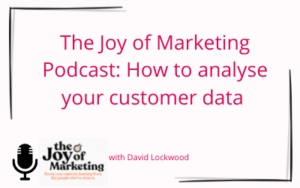Online shopping is going from strength to strength: When we were in lockdown and shops were shut, it made sense that online shopping volumes spiked. However, even with shops opening again, online has continued to grow – and forecasted to maintain this trend into the autumn/winter season. IMRG reported that in June, eCommerce sales grew by nearly 40%, even though the high street was reopening and ONS reported that internet sales were 31% of total UK sales in June 2020, up nearly 10 points on the November 2019 peak.
Shopping in-store is no longer the experience it was. You can’t try clothes on, masks are mandatory, numbers are restricted, and even casually browsing in a shop feels selfish. When the weather turns, and it’s cold and raining, queuing to get into stores will not be as appealing. Also, large numbers of the older generation, traditionally preferring to buy in-store, have switched to online shopping – and are likely to continue to do so in the winter. In a recent survey, Mintel found that 43% of those aged 65+ have shopped more online since lockdown. Compare this to May 2019 when just 16% of those aged 65+ bought online at least once a week, and you can see a radical shift in behaviour. And this is likely to continue. The same report highlights 56% of this older group are worried about being exposed to the virus.
Black Friday is predicted to be bigger than ever: Last year, Black Friday was a blockbuster. In a recent IMRG webinar, eShopworld reported that across their clients, sales in 2019 over the four week Black Friday peak period were 38% higher than in 2018. Based on the substantial online sales growth already seen in 2020, they are planning for sales volumes during this year’s four week Black Friday peak period to be a staggering 65% higher in 2020 than last year. This prediction may be over egging it, but the signs are there for a sizeable sales growth for multi-channel retailers.
But this brings challenges, especially around catering for this demand. You should now be checking your options to increase your stock to service this spike. If there’s a chance you may run out, particularly around your core lines, protect your margins by rethinking your promotion strategy. This could be your opportunity to move away from relying on deep discounts.Additionally, you need to be thinking through how you’ll get your products to people. Huge spikes in demand will put a strain on the delivery services so speak to your provider as soon as possible. Give them your volume forecasts to make sure they allocate enough delivery capacity to you.
Demand for gifting services is increasing: Social distancing is going to be with us for a while, mainly to safeguard the older and more vulnerable members of society. This year, large family gatherings at Christmas may not happen, while care home visits over the festive period to give presents in person may be restricted.
Such limitations mean there could be an increase in demand for gifting services. So if you don’t already have a gifting service, introduce one. We are seeing gifting behaviours that emerged during lockdown still boosted as restrictions lessen because social distancing is enforced. This offers you another way to generate revenue and encourage sales. Add this to your offering, talk about it across your marketing and make it easy for people to find it on your website.
Will Christmas sales be earlier this year? Aggregated Tapestry client data shows that Christmas sales have got 0.72% later over the last 3 years. Christmas 2020 could buck the trend and be earlier this year. With more people expected to be working from home in Q4, they’ll have more time to plan. And with more people turning to online shopping, and the growth of Black Friday as an online phenomenon, consumers might be concerned about product availability. Rather than wait, they may prefer to snap up gifts when they see them, putting pressures on supply chains earlier than usual.
This year, planning for autumn/winter is very different – and very difficult. We all know the reason – we are in unchartered waters due to the pandemic, and the certainty businesses crave simply does not exist.
While there is so much we don’t know, we need to focus on what we do know. From my recent discussions with multi-channel business owners, four areas stand out.




